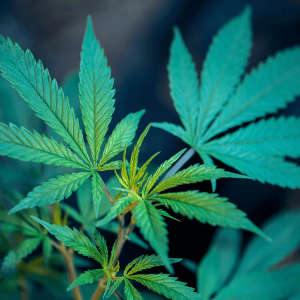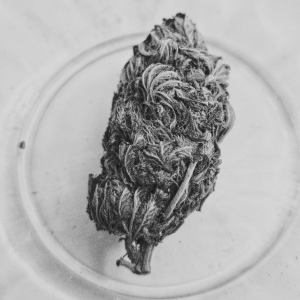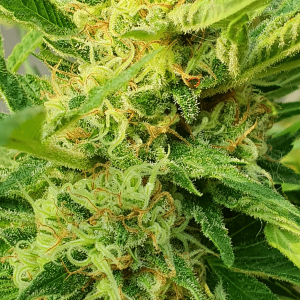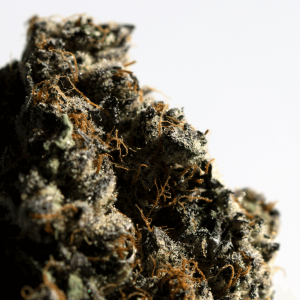PGR, or Plant Growth Regulators, are substances that influence the growth processes of plants, and in recent years, they’ve made their way into cannabis cultivation. Originally developed for use in food crops, these regulators help control plant height, improve yields, and enhance overall cannabis growth.
Understanding PGR weed is crucial for both cannabis growers and consumers, as they can significantly impact the quality and safety of natural cannabis products. This blog will dive into the definition of PGRs, explore their historical use in cannabis cultivation, and highlight the potential risks and benefits associated with them. By the end of this blog, you’ll be a PGR cannabis expert. Let’s begin!
What Are PGRs?
Plant Growth Regulators (PGRs) are chemical substances that play a key role in modulating various growth processes in plants. They can stimulate or inhibit plant growth, depending on how they’re applied.
There are several types of PGRs, such as:
- Auxins
- Gibberellins
- Cytokinins
Each type serves a unique purpose. For instance, auxins are often used to promote root growth in PGR weed, while gibberellins can enhance seed germination and fruit development in PGR weed.
In cannabis cultivation, PGRs are commonly used to control height, encourage bushier growth, and increase overall yields. However, while they can lead to more robust plants, PGRs can also impact the quality of the final product, sometimes resulting in undesirable characteristics.
Understanding these regulators is essential for growers aiming to produce healthy, high-quality cannabis while ensuring safety for consumers.

The Role of PGRs in Cannabis Cultivation
PGRs play a significant role in cannabis cultivation, offering a variety of benefits that can help growers achieve optimal PGR weed health and yield.
By using these regulators, cultivators can address specific plant issues, such as stretching and uneven bud formation, particularly in indoor environments where plants may not receive consistent light. For instance, PGRs like Paclobutrazol can help keep PGR weed plants shorter and bushier, providing more surface area for bud development and effectively mitigating the stretching that often occurs when plants grow too close to the light source.
With well-managed PGR application, growers can enhance their overall yields and create plants that are better equipped for a successful harvest.
Commonly Used PGRs in the Cannabis Industry
In the cannabis industry, several PGRs have gained popularity for their effectiveness. Daminozide and Paclobutrazol are two of the most commonly used products. Daminozide works by inhibiting cell elongation, leading to shorter and sturdier plants, while Paclobutrazol slows down growth in a similar manner but with a slightly different mechanism, affecting hormonal balance within the plant.
When it comes to application, it’s crucial to follow recommended usage rates to avoid adverse effects. Generally, these PGRs are applied during the vegetative stage of growth, often at a dilution rate per gallon of water based on the manufacturer’s instructions.
Timing and dosage are essential to ensure that PGR weed plants achieve the desired morphology without compromising their health and integrity.

Advantages of Using PGRs
Using PGRs in cannabis cultivation comes with several advantages that can significantly improve overall plant health and yield. Here are some key benefits of PGR weed:
- Increased yield potential: PGRs can help maximize the number of buds and overall biomass, allowing growers to harvest more from each plant.
- Enhanced bud density and potency: By controlling plant growth, PGRs can lead to thicker, denser buds that typically have higher cannabinoid concentrations, improving the quality of the final product.
- Improved pest and disease resistance: Healthier, more robust plants can better withstand pests and diseases, reducing the need for harsh chemical treatments and improving the safety of the final product.
Potential Risks and Concerns
While PGRs can provide several advantages in cannabis cultivation, there are also potential risks and concerns that both growers and consumers should be aware of.
One of the main concerns revolves around health risks associated with PGR residues. Some studies suggest that certain PGRs, when not used properly, can leave harmful residues on the plant material, potentially affecting consumers’ health when ingested.
Additionally, there may be long-term effects on both the PGR weed plants themselves and the surrounding ecosystem. The overuse or misuse of PGRs might lead to plants that are less resilient to environmental stresses, making them more susceptible to pests or diseases in the future.
There’s also the concern of PGR runoff negatively impacting the surrounding soil and biodiversity.
Finally, the legal implications and regulations surrounding the use of PGRs in cannabis cultivation can vary widely by region. Growers need to stay informed about local laws and guidelines to ensure compliance, as using unapproved substances can lead to legal challenges, including product recalls or fines.
Awareness and education about these risks are crucial for anyone involved in the cannabis industry, ensuring that both health and legal standards are met effectively.
How to Identify PGR Weed
Spotting PGR-treated cannabis can be crucial for both growers and consumers who want to ensure quality and safety. One of the telltale signs of PGR weed is its bushy appearance; while naturally grown cannabis may have a more varied structure with elongated buds, PGR-treated plants tend to be more compact and uniform.
Additionally, PGR weed often features denser, heavier buds, which can feel almost rock-like compared to the lighter, more airy texture of naturally grown cannabis. Consumer awareness is key, as these visual cues can help differentiate between the two.
Importance of Lab Testing for Consumers
For consumers who want absolute certainty about what they’re purchasing, lab testing is the gold standard. These tests can identify residual PGRs on cannabis products and verify cannabinoid content and safety. Knowing what’s in your PGR weed keeps you informed and ensures you’re enjoying a product that’s not only potent but also safe to consume.

Alternatives to PGRs
For growers looking for alternatives to synthetic plant growth regulators (PGRs), organic cultivation methods are a fantastic option. Techniques like companion planting, where certain plants are grown together to promote growth or deter pests, can enhance the natural health of cannabis plants without relying on chemicals.
Additionally, natural growth enhancers such as compost teas or seaweed extracts can boost plant vitality and resilience. By minimizing or completely eliminating PGR usage, growers often see benefits like improved soil health and ecosystem sustainability. This can lead to plants that are not only robust but also produce high-quality buds that may resonate better with conscious consumers.
Consumer Awareness and Education
In today’s cannabis market, transparency is key. Consumers should feel empowered to ask growers and dispensaries about their practices related to PGR usage. Knowing how cannabis is cultivated helps consumers make informed choices. This can include direct inquiries about what products are used during cultivation and whether any lab tests are available to verify the absence of harmful residues.
There are numerous resources available, including educational websites and consumer advocacy groups, that provide insights into cannabis products. Educating oneself about the cultivation process not only promotes safer choices but also supports growers who prioritize natural and ethical practices.
Future Trends in PGR Use
As we look ahead, emerging research on plant growth regulators (PGRs) is paving the way for more refined agricultural practices, especially in cannabis cultivation. Innovations in cultivation techniques, such as precision agriculture and advanced hydroponics, are starting to integrate PGRs in more controlled and thoughtful ways, enhancing plant health without compromising quality.
Additionally, regulatory changes are on the horizon, which could reshape how these substances are used in the industry. As lawmakers become more informed about the role of PGRs and their impact on both plants and consumers, we can expect clearer guidelines on safe application methods and residual limits. This shift could ultimately lead to a more sustainable approach, appealing to both growers seeking efficiency and consumers prioritizing health and safety.
By staying on the cutting edge of these trends, the cannabis community can ensure a future that balances productivity with responsibility.

Conclusion
In wrapping up our discussion on plant growth regulators (PGRs) in cannabis cultivation, it’s clear that understanding both their benefits and potential drawbacks is essential. We’ve explored how PGRs can enhance growth and robustness, but they also come with concerns regarding health risks and environmental impact.
For consumers, being informed about cultivation methods can make a significant difference in the quality they receive. Ultimately, striking a balance between yield and quality is crucial for the cannabis community.
By prioritizing transparent practices and personal education, both growers and consumers can contribute to a healthier, more sustainable industry.
Frequently Asked Questions
1. Is PGR weed harmful?
The potential harm of PGR weed largely depends on the specific substances used and their concentrations. While some PGRs are deemed safe in controlled amounts, excessive or improper use can lead to undesirable effects both for the plants and consumers. Health concerns can arise from pesticide residues or chemical buildup, reinforcing the importance of lab testing and transparency in cultivation practices.
2. What is PGR in legal weed?
In the context of legal weed, PGR refers to plant growth regulators, which are synthetic or natural substances used to manipulate and enhance plant growth and development. While some growers use PGRs to achieve a controlled growth environment, others prefer organic and natural methods to maintain quality and safety in their products.
3. What is the difference between PGR and normal buds?
The main difference between PGR and normal buds lies in their growth characteristics and structure. PGR-treated buds tend to be denser, heavier, and more uniform, while naturally grown buds usually have a lighter, fluffier texture and a more varied shape. Many connoisseurs believe that naturally grown buds offer a richer flavor and aroma, elevating the overall cannabis experience.
4. What does PGR stand for?
PGR stands for plant growth regulator. These substances are used by growers to enhance or control various aspects of plant growth, such as flowering, fruiting, and stem strength. Understanding what PGRs are and how they function can help consumers make better choices about the cannabis products they choose to use.
5. Is PGR weed legal?
The legality of PGR weed can vary depending on local laws and regulations surrounding cannabis cultivation. In many places, the use of certain plant growth regulators is permitted, provided they comply with safety guidelines set by regulatory authorities. However, it’s essential for consumers and growers to check their specific state or country’s regulations surrounding consuming PGR weed to ensure they are adhering to the current legal standards regarding PGRs in cannabis products. Staying informed can help navigate the often-changing landscape of cannabis legislation.

 Rewards
Rewards




